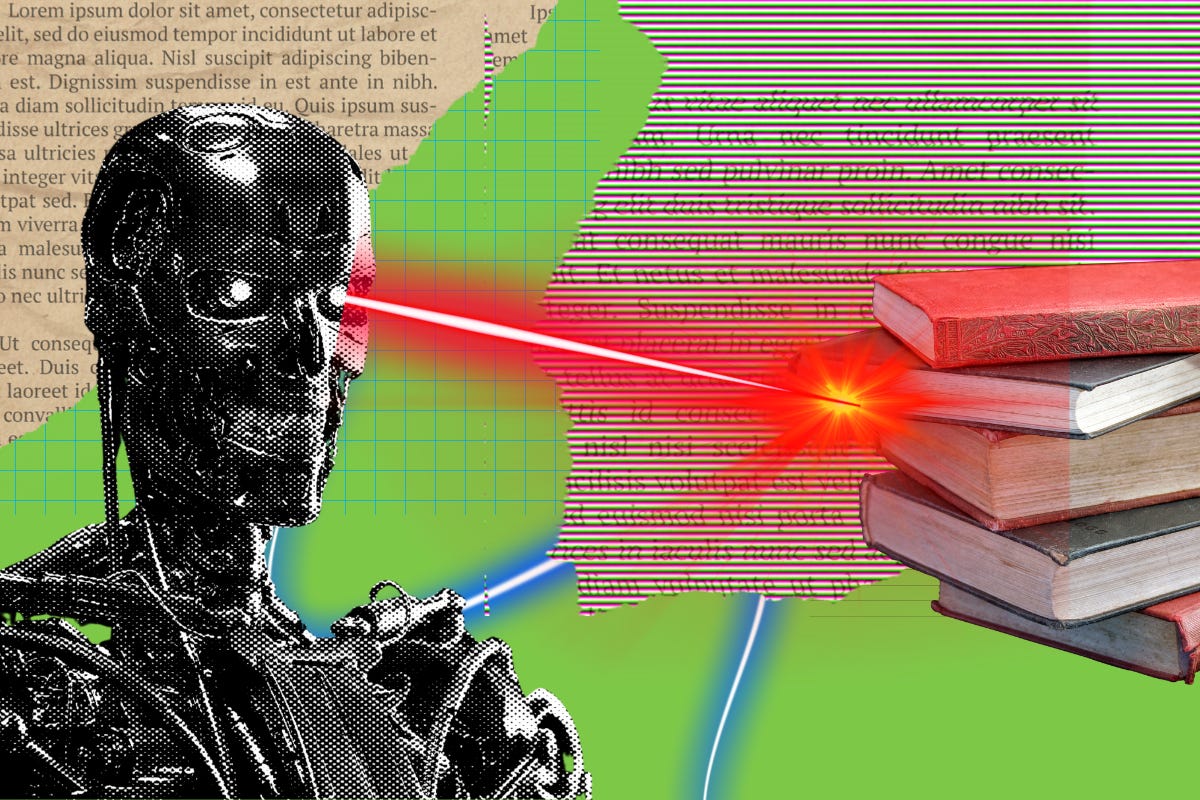Ed tech might finally redeem itself
As someone who constantly thinks about how we can innovate, expand, improve, and recreate education systems, I see a lot of potential for generative AI
There is a headline about ChatGPT and Artificial Intelligence (AI) in every direction I look.
It’s overwhelming.
I’ve played with the tools to see what the hubbub is about, and it’s astounding how this all seemingly came out of nowhere. Not long ago, we were locked in at home during pandemic hell, and now we can type in a few prompts into a magic machine and design album covers in our spare time.
Once again, I’m a techno-optimist asking questions about what this means for education.
Upfront, I’ll exercise a little skepticism to look sober and avoid turning full-on ed-tech-bro. I can't be uncritical because there always seem to be unforeseen consequences of early adopting new technology and injecting them into legacy education systems.
Let me quickly pay lip service to the potential downside.
I'm dating myself as an 80s kid, but go back and watch "The Terminator" to see a solid message about the unforeseen consequences of technology and artificial intelligence. The movie centers on the disastrous outcome of a rogue artificial intelligence system, Skynet, which instigates a nuclear holocaust and an apocalyptic war between humans and robots. The plot follows a violent mission-driven cyborg assassin, the Terminator, sent back in time to eliminate Sarah Connor, the mother of humanity's future resistance leader.
The point: tech that thinks for itself may yield different results than you intend.
For instance, a TikTok influencer convinced me to try an AI-driven service that creates professional headshots that can be used for LinkedIn and other platforms. Super-ultra-realistic AI headshots that are created by using several of your real pictures.
Only $30. Not bad at all.
Here’s mine:
Nailed it!
That said, the rapid growth of AI and natural language processing technologies, such as OpenAI's ChatGPT, has opened up a new realm of possibilities for enhancing public education. In an era where personalization and efficiency are key to effective learning, these forward-looking tools can leapfrog our approaches to teaching and learning.
What follows is my running list of how AI and ChatGPT might further the goals of public education and address some of the most pressing challenges educators and students face.
Personalized Learning and Adaptive Feedback
One of the most significant advantages of AI and ChatGPT in education is their ability to provide personalized learning experiences. These technologies can analyze students' unique learning styles, preferences, and progress to creating tailored educational content. By doing so, they can help bridge the gap between students with varying aptitudes and ensure that everyone receives the support they need to succeed.
Further, AI-driven systems can offer real-time, adaptive feedback to help students grasp complex concepts and improve their understanding. This instant feedback can boost motivation, engagement, and academic performance.
Intelligent Tutoring Systems
One of the biggest devils in education is the impossibility of differentiating instruction when teacher-to-student ratios don't allow it. Integrating AI and ChatGPT in intelligent tutoring systems can simulate one-on-one interactions with human tutors. By leveraging natural language processing, these systems can be conversational, understand student queries, provide step-by-step guidance, and offer additional resources when needed. As a result, such tutoring systems can supplement traditional classroom instruction, ensuring that students receive individualized attention and reducing the workload for teachers.
Enhanced Assessment and Evaluation
AI algorithms can streamline assessment and evaluation processes by automating routine tasks like grading quizzes, essays, and exams. Not only does this save time and resources, but it also eliminates human bias, leading to more objective and consistent evaluations. Additionally, AI can identify patterns in student performance, offering insights into their strengths and weaknesses. Teachers can use this data to design targeted interventions and improve learning outcomes.
Early Detection and Support for Learning Disabilities
AI-powered tools can monitor student progress and identify patterns that may suggest learning disabilities, such as dyslexia, ADHD, or autism. By detecting these issues early on, educators can provide appropriate support and accommodations, ensuring no student is left behind.
Teacher Training and Professional Development
AI and ChatGPT can also enhance teacher training and professional development programs. By offering personalized learning paths and simulating classroom scenarios, these technologies can help educators sharpen their skills, stay up-to-date with the latest pedagogical approaches, and effectively address the diverse needs of their students.
This list will continue.
As someone who constantly thinks about how we can innovate, expand, improve, and recreate education systems - always with an eye on efficiency, opportunity, and quality - I see a lot of potential with AI and ChatGPT. These new technologies have direct applications for personalizing learning, enhancing assessment processes, and supporting students and educators to take many different paths to achievement.
Yes, I’m cautious. Many virtual education and tech proposals have yielded virtually no progress in the past. We’ve been burned before regarding promising technologies that deliver too little in student achievement (or worse, hurt equity).
But that doesn’t mean we become incapable of seeing the potential of new tools, especially when the tools are as powerful and promising as generative AI.
We are so overdue for a major advancement in how we educate America’s 50 million students. I hope our leaders invest in research, development, and implementation to ensure these tools are accessible to all.
For the record, the Terminator ends up being a good guy who saves the world.





